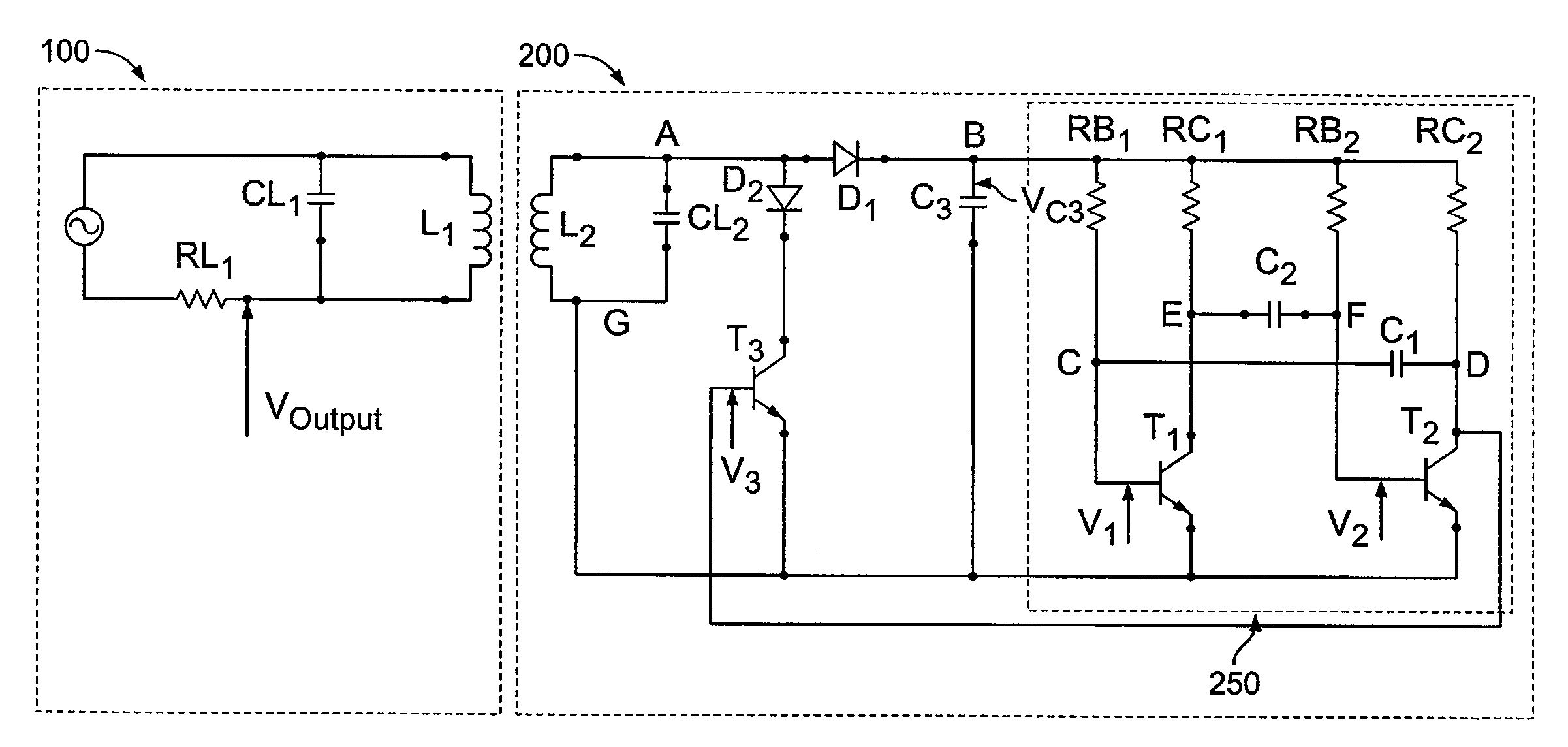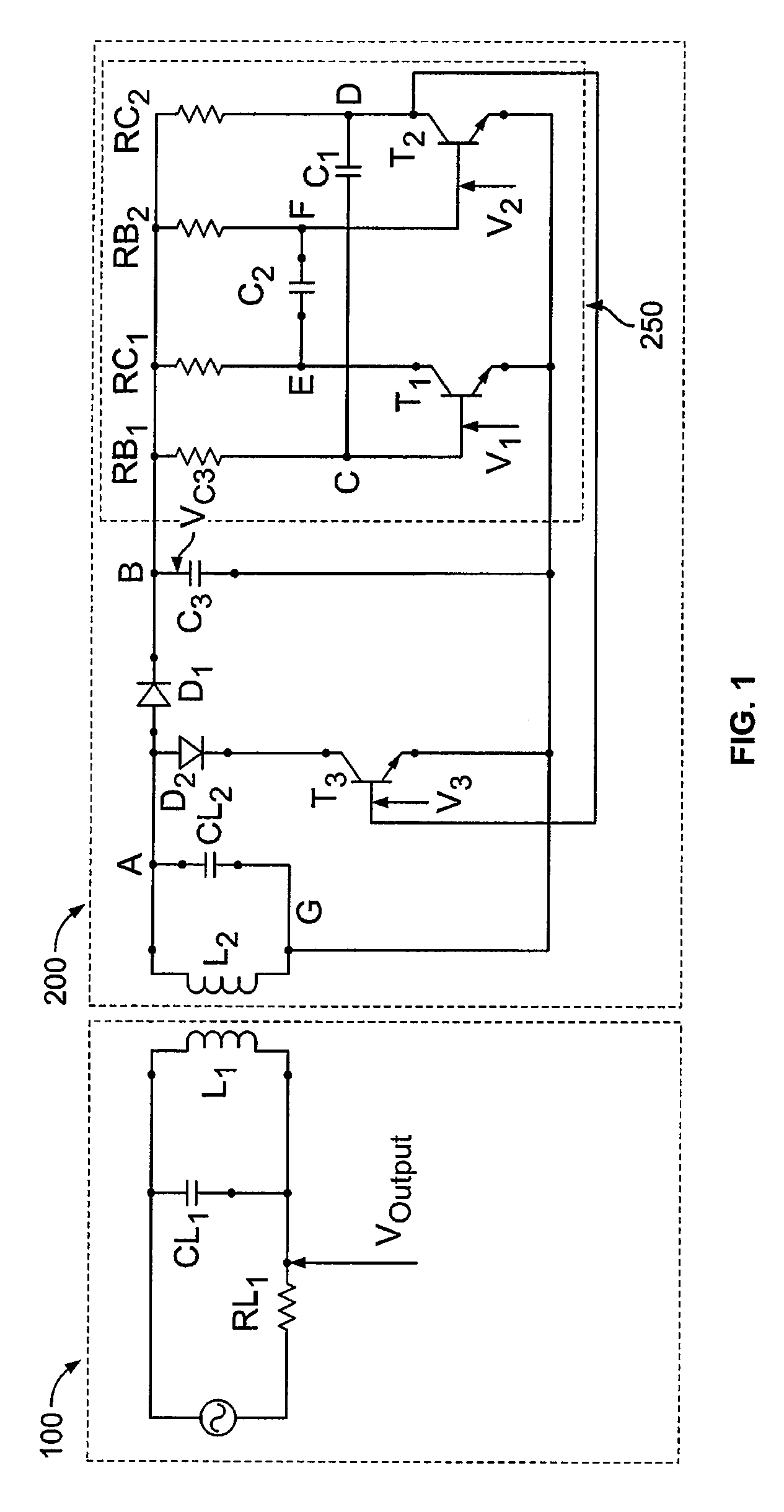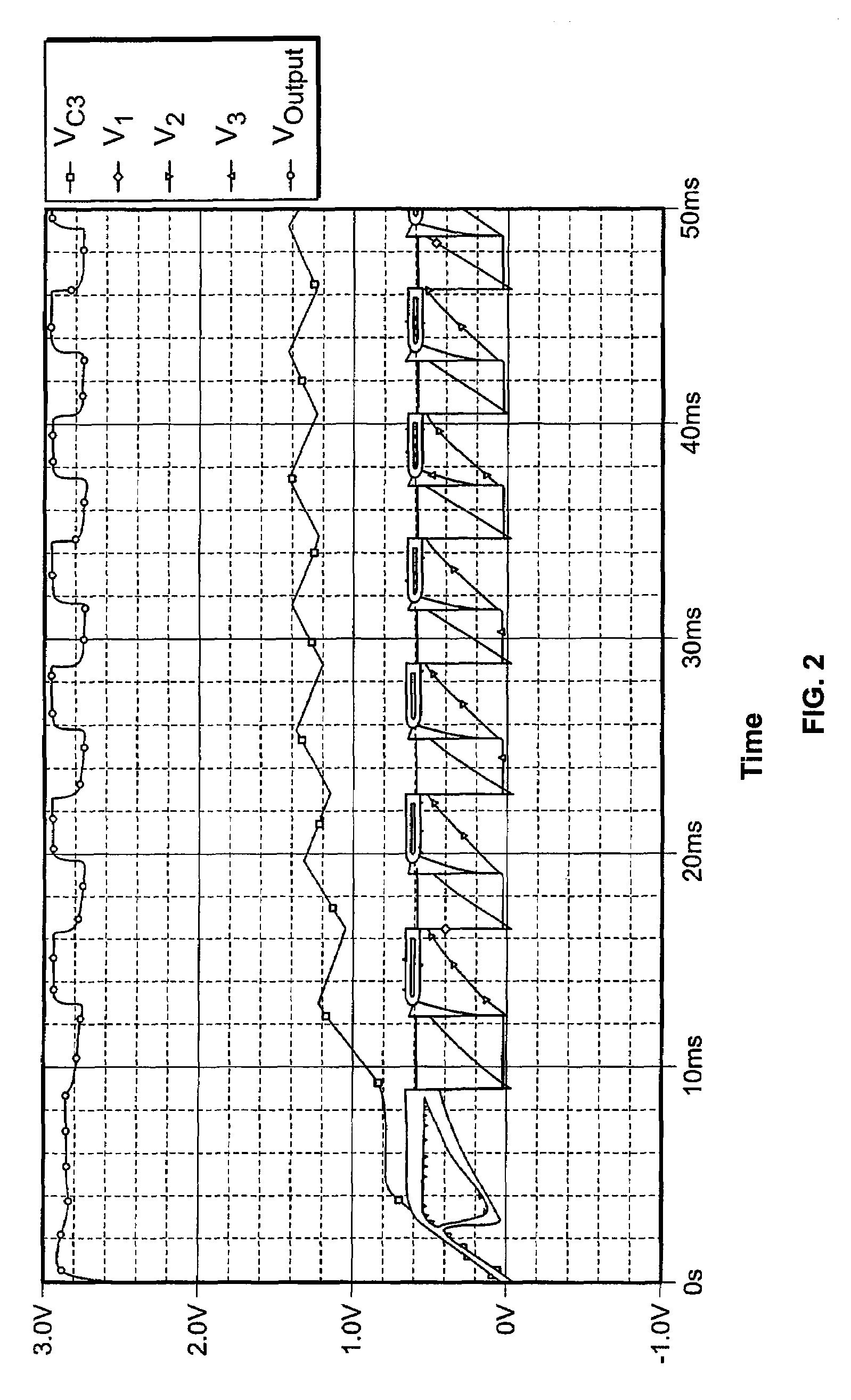Circuit and method for contact-less transmission
a contact-less transmission and circuit technology, applied in the field of contact-less connection, can solve the problems of poor quality of the signal received at the first module, and achieve the effect of improving the contact-less transmission of signals
- Summary
- Abstract
- Description
- Claims
- Application Information
AI Technical Summary
Benefits of technology
Problems solved by technology
Method used
Image
Examples
first embodiment
[0022]FIG. 1 shows a system consisting of a first circuit 100 and a second circuit 200 for establishing a contact-less transmission according to the present invention. The first circuit 100 (further circuit) comprises a first inductor L1 while the second circuit 200 (circuit) comprises a second inductor L2, so that the first circuit 100 and the second circuit 200 form, respectively, a primary and secondary circuit of a transformer. The first and second inductors L1, L2 therefore interact by a magnetic coupling.
[0023]The first circuit 100 is connectable to a signal generator, such as an alternating signal generator. The signal generator generates a signal which is transmitted inductively from the first inductor L1 of the first circuit 100 to the second inductor L2 of the second circuit 200. The second inductor L2 of the second circuit 200 is part of a resonant circuit, which includes a capacitor CL2 connected in parallel with the second inductor L2. The signal transmitted inductively...
second embodiment
[0040]FIG. 4 shows a system consisting of a first circuit 100 and a second circuit 200′ according to the present invention. Since the first circuit 100 is substantially identical to the first circuit 100 described with respect to FIG. 1, further description of elements thereof will be omitted hereafter.
[0041]The second circuit 200′ comprises an inductor L2 which forms a resonant circuit with a capacitor CL2. A rectifying element, such as a diode D1, is arranged in such a way that the diode D1 rectifies an excitation signal output by the resonant circuit. An anode of the diode D1 is connected to a connection point A, which is located between the inductor L2 and the capacitor CL2. A cathode of the diode D1 is connected to a resistor R1. A capacitor C1 is connected in series with the resistor R1 and to a connecting point H, which is located between the inductor L2 and the capacitor CL2. The connecting point H is different from the connecting point A. A resistor R2 is connected in paral...
PUM
 Login to View More
Login to View More Abstract
Description
Claims
Application Information
 Login to View More
Login to View More - R&D
- Intellectual Property
- Life Sciences
- Materials
- Tech Scout
- Unparalleled Data Quality
- Higher Quality Content
- 60% Fewer Hallucinations
Browse by: Latest US Patents, China's latest patents, Technical Efficacy Thesaurus, Application Domain, Technology Topic, Popular Technical Reports.
© 2025 PatSnap. All rights reserved.Legal|Privacy policy|Modern Slavery Act Transparency Statement|Sitemap|About US| Contact US: help@patsnap.com



